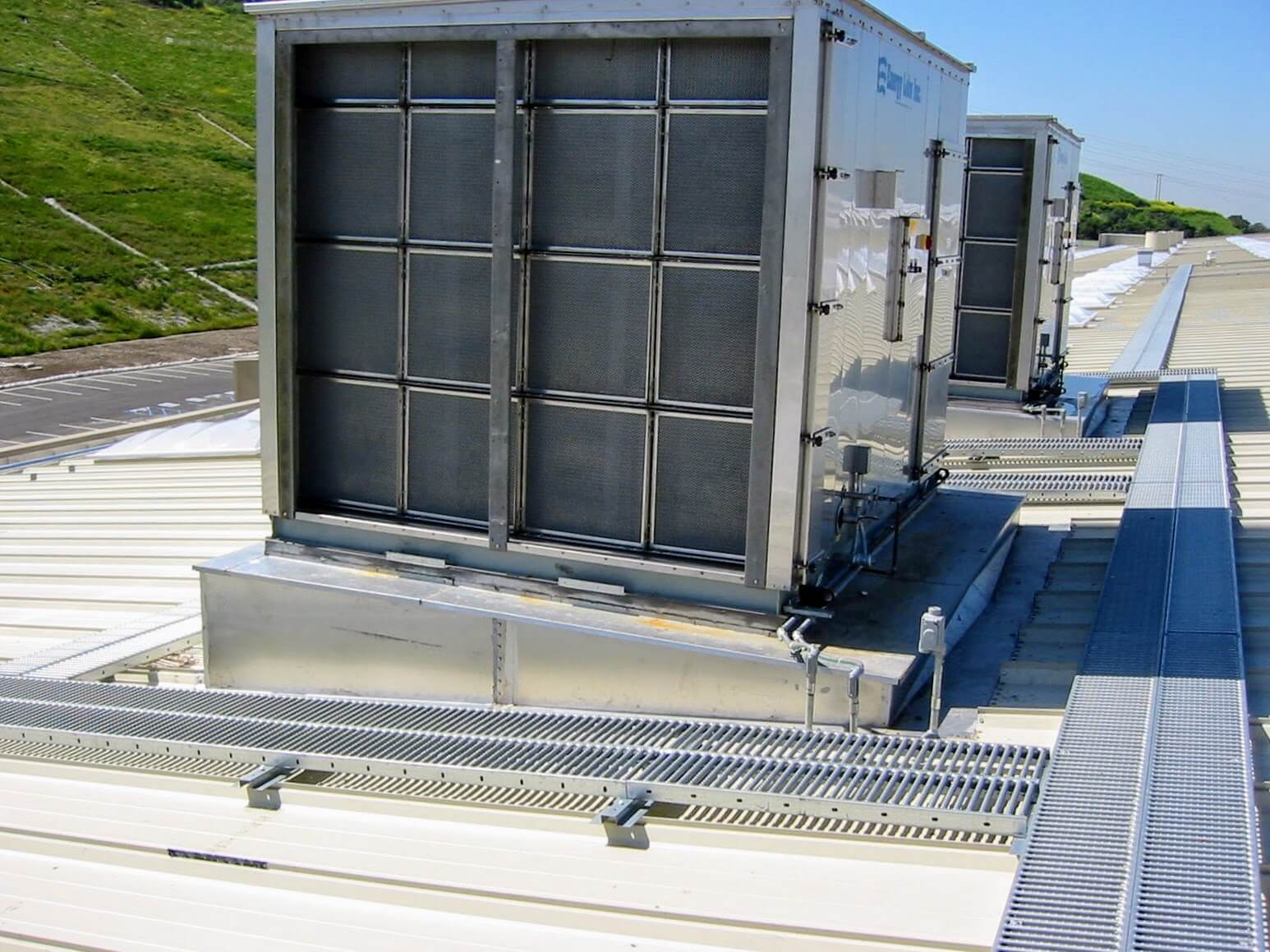Metal Roof Walkways – Overview
Metal Roof Walkways are quickly gaining popularity as a way to provide a stable and safe work area for maintenance personnel. These easy-to-install systems also extend the life of any metal panel roof. Walkways can easily be fitted with hand-rail for an additional level of fall protection. While the process of quoting, ordering and installing may seem difficult, the steps are actually quite simple.
A well-designed metal roof walkway should complement the workflow of rooftop service personnel. Seasoned metal roof walkway providers should be able to evaluate a roof plan and make suitable recommendations with respect to layout.
The overall plan should consider the following:
- Roof type: Standing Seam or Panel Rib
- The number of planks required
- How many directional changes are necessary?
- Will the walkway cross a ridge — if so, how many times?
- Is pitch correction necessary?
- Will a handrail or toe board be necessary — one or both sides of the walkway?
Necessary Materials
When a job is bidding, we all know that detailed roof plans are not always available. Fortunately, with a few basic inputs it is not difficult to estimate a working budget for a walkway system. Start with basic high-level assumptions about the project and then use a general price-per-lineal foot cost rate. The first and most significant cost is assessing the amount of planking material needed. Systems generally employ 24- or 36-inch widths. Roof walkways may be need to be wider for access reasons or when it is a platform for loading or mechanical servicing.
Most walkway systems use 18-gauge galvanized steel safety grating planks with pierced surfaces to provide a high level of traction. Typical grating planks are 12-inches wide and interlock with one another for various widths. Bends in the material provide necessary rigidity for mounting on roof seams or supports. A heavier gauge plank is applicable when there are higher load rating or wider spans between supports.
Accessories to secure the planks to the metal roof include “M” clips, fasteners and support plates. Standing seam roofs use non-penetrating hold-down clamps (S-5!) while panel rib roofs use long-life fasteners. Ledgers ensure that planks remain on the same plane where directional changes occur to prevent tripping hazards.
Many metal roof walkways do not include pitch correction; particularly when the roof slope is mild (1:12). However, some high-pitch roof systems require a level walking surface for safe usage. These systems use pitch-correcting supports that match the roof slope. Costs for pitch correcting vary depending on the roof pitch.
Ensuring Safety
Various regulations and codes, including OSHA 1910.23 and IBC 1607.7, dictate the use of safety rails and toe boards. Fortunately, these are easily adapted to metal roof walkways. Safety rails are generally supplied on the down slope side of the walkway system or near the roof edge. Handrail on both sides of the walkway for sections that run along the ridge, or on high pitched roofs. Toe boards are required when there is a risk of falling materials to personnel below.
Handrails must be capable of withstanding a load of at least 200 pounds applied in any direction at any point on the rail. Some states have requirements exceeding this value so it’s important to check the local code. If the handrail is constructed of metal pipe—which is common with metal roof applications—material must be at least 1 1/2 inches in diameter. Spacing of handrail support fittings cannot exceed 8 feet. A standard railing consists of top rail, intermediate rail, and vertical posts. The minimum vertical height is 42 inches from the upper surface of top rail to the platform level.
Contractors procuring metal roof walkways should consider that it is important to not only secure high quality materials, but to take into account the value of a supplier that supports the process. Does the supplier provide all the necessary accessories, detailed roof plans and bills of material showing plank, clip, and accessory placement on a job by job basis? Does the supplier provide assistance before, during, and after the job? The right combination leads to a high-quality installation that is on time and on budget.
Visit our Roof Walkways & Handrails Product Page or Call us today to discuss your next project: (800) 423-1619.


